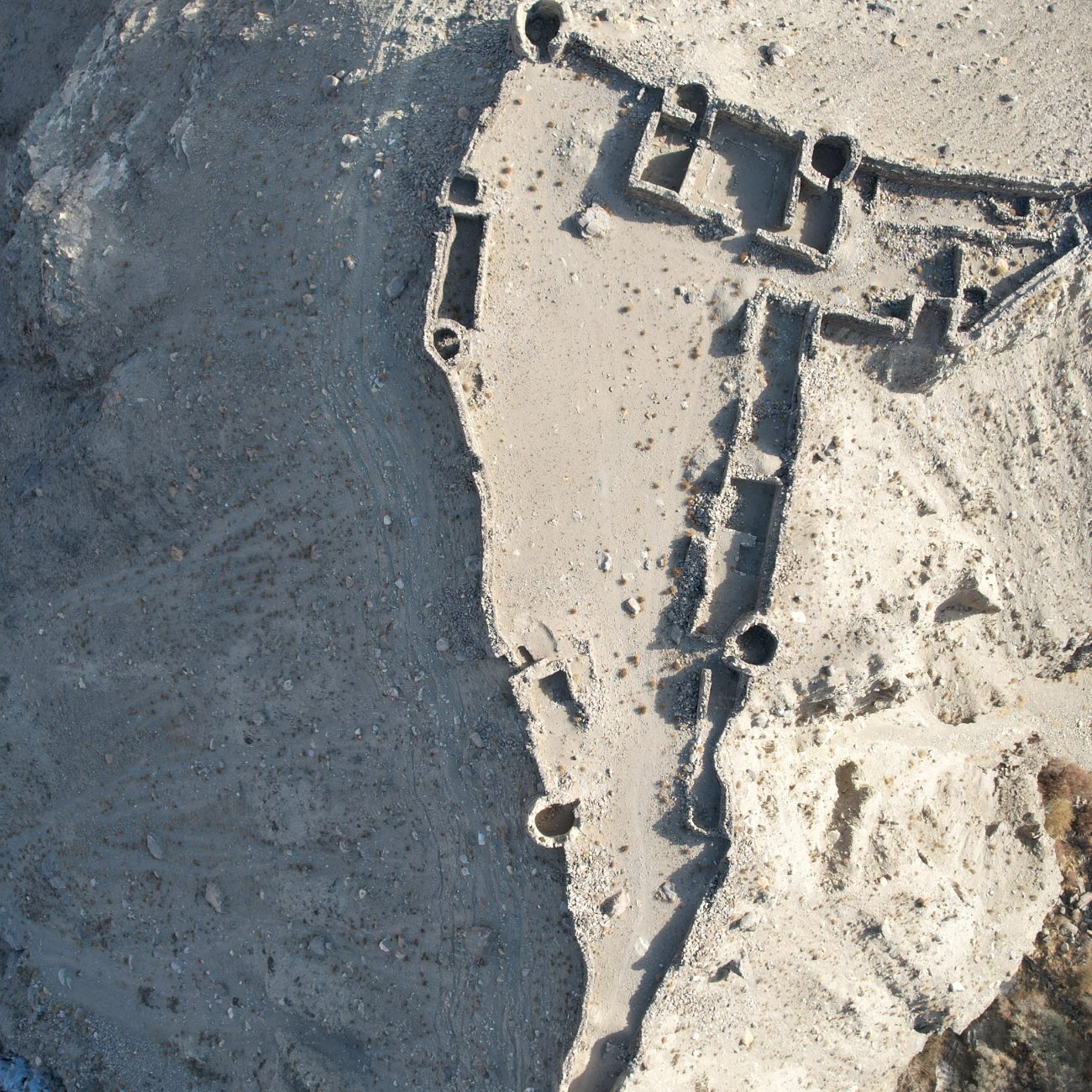Yamchun is located on the south-east border of Tajikistan, in Gorno-Badakhshan Autonomous Region, in Ishkashim District. It is near Yamchun or Vrang villages, and 178 km from Khorugh or 72 km from Ishkashim. The valley that the fortress controlled, known as Wakhan Valley or Corridor, is crossed by river Panj, which is the border with Afghanistan. The Wakhan Valley has been one of the most prominent geographical corridors between Central Asia and East Asia. It has been a historical pass for traders and travelers on the Silk Roads, and as a strategic place for the control of the Pamirs region. For this reason, both banks of the Panj River have fortresses, called in the area “qalha”. Of all of them, Yamchun is one of the most relevant, and the largest of them all.
Soviet archaeologist Bubnova placed the Tajik fortresses of Namadgut, Yamchun and Ratm between the 3rd century BC and the 6th-7th century AD, although they were also occupied in later periods. There are no elements that can provide a specific date, but some archeological finds and contextual evidence suggest the construction of these forts, approximately, between 50 BC and 250 AD, when the area was incorporated into the Kushan Empire.
The ultimate goal of the project is to contribute to strengthen the tourism sector in GBAO and Khatlon regions, taking advantage of local community effort in listing the Fortress as World Heritage. The intervention will generate economic growth and will seek improving the quality, resilience, and sustainability of the local population.
The intervention involves the entire Fort Yamchun complex, seeking to carry out the necessary / minimum rehabilitation works to ensure the preservation of the Cultural Heritage. The project seeks not only to consider a punctual intervention but to provide the environment with a new functionality that will allow its future maintenance while bringing it closer to the community as well as increasing its tourist attractiveness.
The construction works designed for the Fort’s building ensemble are divided into 4 large categories. First, the preliminary works, necessary to adapt the site to the works to be developed in the fortress. Secondly, the geotechnical and structural stabilization works, aimed at consolidating the monument. Thirdly, the new constructions, which include the footbridge, the access pavilion, the roofs for the exhibitions, the viewing platform and the stairs. Lastly, urban planning works were defined, i.e., to provide accessibility to the different areas of the fort, paving depending on the intended uses, lighting, etc.
